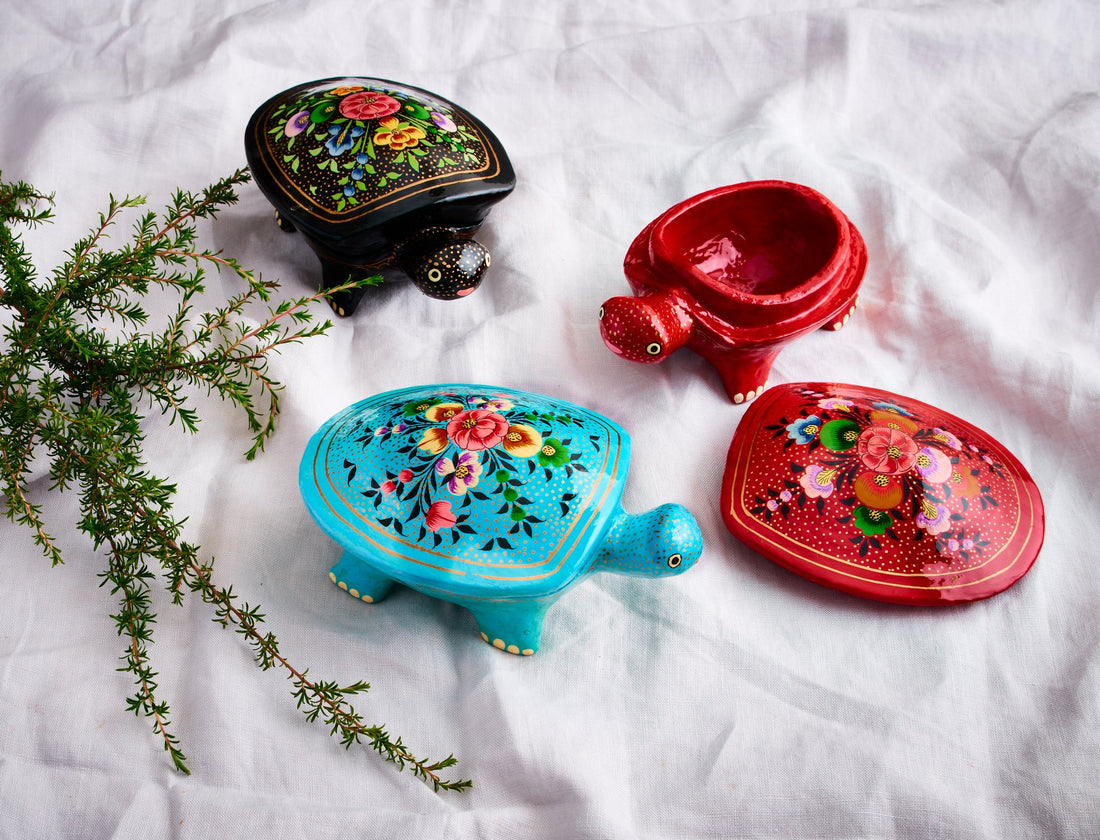
Help us revive the art of Papier Mache
Papier Mache or Paper mache is the delicate art of using recycled paper to create delicate, lightweight objects. Paper Mache is one of the oldest sort of craft in Kashmir, India which is slowly dying. If revival of traditional arts and crafts is your interest then together we can provide sustenance to artisans to bring back this art to its full glory.
What is Paper Mache?
Paper Mache or Papier Mache is tedious art form which makes use of raw materials like recycled paper, cloth, sometimes reinforced with textiles, or bound with an adhesive, such as glue, starch, or wallpaper paste.
History of Paper Mache
Each state of India has its own story of how this art of introduced in that state. The most notable one is from Kashmir as it dives into the origin of this art in India.
It is believed that Mir Sayyid Ali Hamdani introduced this art form to Kashmir. Mir Sayyid Ali Hamdani is understood to have visited Kashmire thrice - first in 1372, second in 1379 ad third time in 1382 along with his followers and disciples many of which were skilled craftsmen. The craftsmen mingled with locals and paved the way for adaptations of their crafts.
Paper mache art thrived in the region under the rule of King Zain-ul-Abidin in the 14th century. Zain-ul-Abidin was the eighth Sultan of Kashmir, who ruled for a period of fifty years (1420-1470) and brought an era of development and prosperity. During this time, the paper mache art which was earlier confined to small items like stationary cases was extended to palanquins, ceilings, bedsteads, doors and windows. The ceiling at Madin Sahib Mosque, built in 1444 in Srinagar, the ceiling at the Shah Hamdan Mosque at Fatehkadal and the Mughal Gardens at Shalimar in Srinagar are a few examples where the art of paper mache was applied to woodwork.
Steps involved in Paper Mache
The creation of a papier-mache object can be divided into two distinct categories, the sakhtsazi (making the object) and the naqashi (painting the surface).
Artisans soak used newspaper or scrap paper until it disintegrates, then mix it with cloth, rice or straw to form a pulp.
The mixture is moulded using clay, wooden or brass moulds to give the required shape. It is then dried, and cut away from the mould usually in two halves and then glued together again into shape.
Artisans coat the surface with glue paste, rub it smooth with baked clay and paste on layers of tissue papers to prevent it from cracking. Post this, the object is sand-papered to provide a smooth product for painting.
The base colour and motifs are all created freehand with paints, then burnished and coated with lacquer.

Our artisan, Yusuf is busy painting this beautiful storage box shaped like a tortoise
Which are the popular motifs?
Common motifs that appear on Kashmiri paper mache products include flowers, box patterns, jungle motifs, and Kashmiri symbols like almonds and the chinar, a five-pointed leaf.
Is Paper mache restricted to Kashmir?
Apart from Kashmir, this art is also practised in other states of India like Madhya Pradesh, Orissa, Maharashtra and Tamil Nadu. Artisans of each state bring a touch of their own unique culture and tradition in this beautiful art. For example, the craftsmen of Ujjain in Madhya Pradesh are popular for making very realistic papier-mache bird figures. Craftsmen from Tamil Nadu specialise in doll figures, and statues of gods and goddesses.
Future of Paper Mache
Everyday paper mache household items are exported to many countries in the globe from India and the demand is slowly increasing. However, there are a lot of opportunities to improve the conditions of artisans in order to allow them to practise this art without worrying about sustenance.
A step in the right direction is to ensure that you buy fair trade items. A fair trade organisation practises the ten principles defined by World Fair Trade Organisation. These are to be followed in day-to-day work to ensure that economically disadvantaged producers are given the dignity, confidence and right environment so that they can thrive and flourish.
Together, we can make a difference in the world. Let's embrace the diversity to let incredible things happen in our journey of this life.
